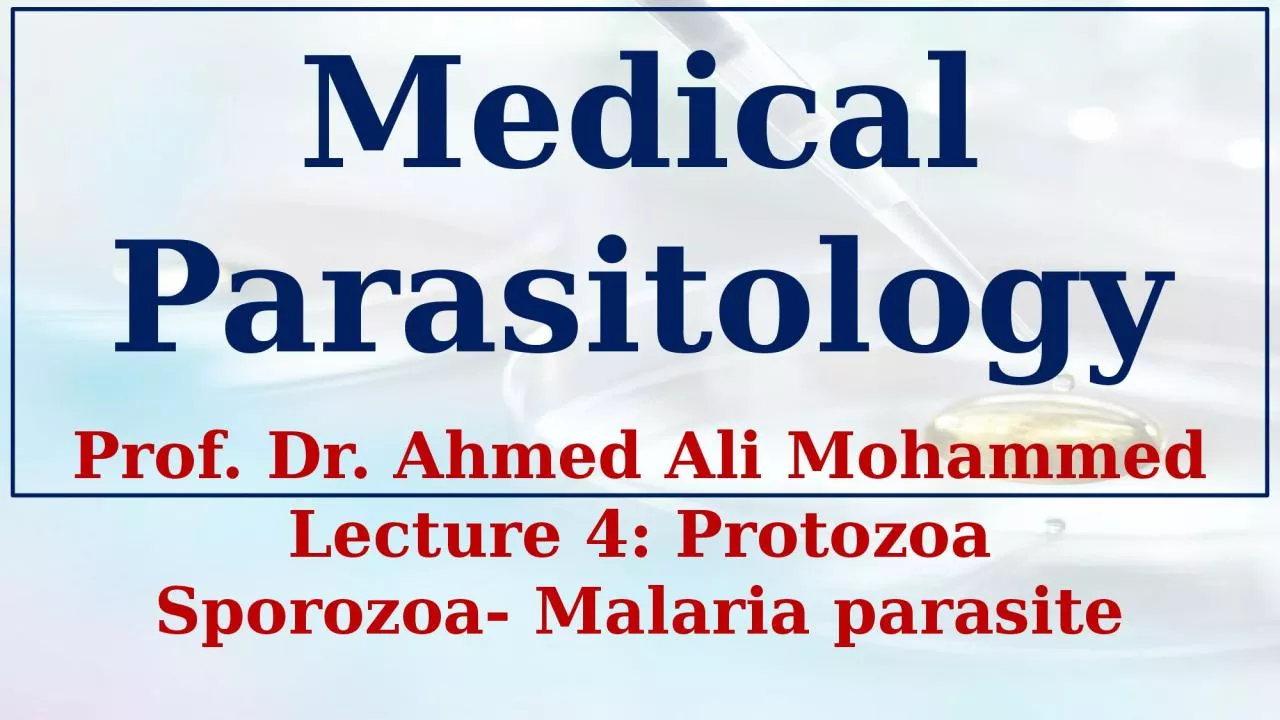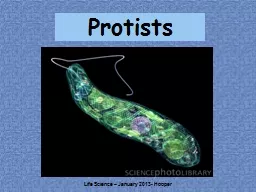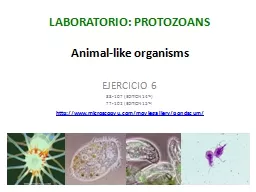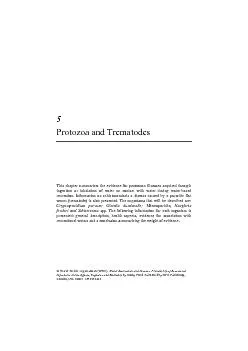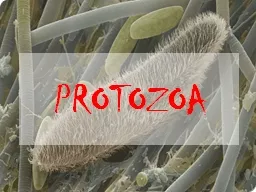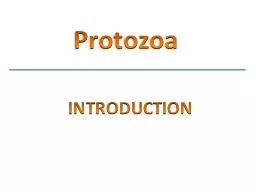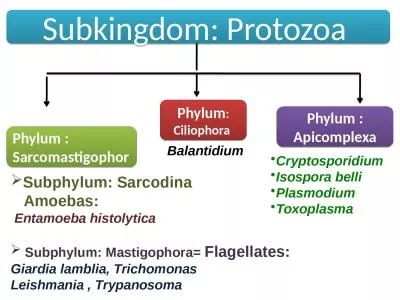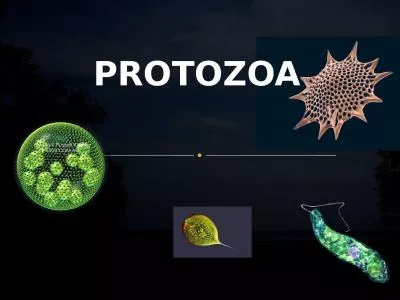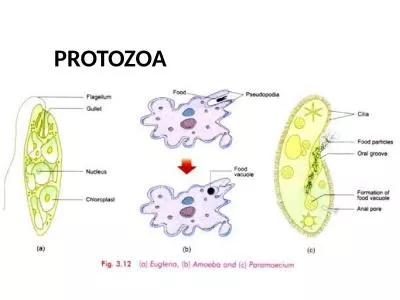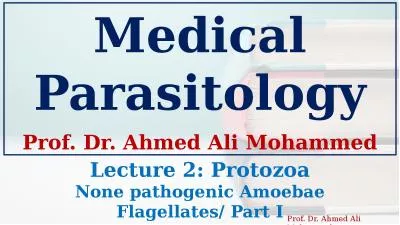PPT-Lecture 4: Protozoa Sporozoa-
Author : hanah | Published Date : 2024-03-13
Malaria parasite Medical Parasitology Prof Dr Ahmed Ali Mohammed Malaria parasite Plasmodium vivax Plasmodium falciparum Plasmodium malariae Plasmodium ovale Malaria
Presentation Embed Code
Download Presentation
Download Presentation The PPT/PDF document "Lecture 4: Protozoa Sporozoa-" is the property of its rightful owner. Permission is granted to download and print the materials on this website for personal, non-commercial use only, and to display it on your personal computer provided you do not modify the materials and that you retain all copyright notices contained in the materials. By downloading content from our website, you accept the terms of this agreement.
Lecture 4: Protozoa Sporozoa-: Transcript
Malaria parasite Medical Parasitology Prof Dr Ahmed Ali Mohammed Malaria parasite Plasmodium vivax Plasmodium falciparum Plasmodium malariae Plasmodium ovale Malaria is one of the most prevalent and weaken diseases afflicting humans Regardless of the species responsible for the infection the certain aspects of the disease such as the life cycle of the infective organism the chemotherapy and epidemiology are similar except some medically significant dissimilarities . Instructor: . Almonther. I. . Alhamedi. The Islamic University of Gaza. Department . of . Biology. E-mail : . mhamedi@iugaza.edu.ps. Web page :. http. ://site.iugaza.edu.ps/mhamedi. Phylum- protozoa. Life Science – January 2013- Hooper. What is a Protist?. Protists. are eukaryotes (organisms whose cells have a nucleus). that cannot be classified as plants, animals, or fungi.. Additionally, all protists live in moist surroundings.. Animal-like organisms. EJERCICIO 6. 88-107 (EDITION 14. TH. ). 77-102 (EDITION 15. TH). . http://www.microscopyu.com/moviegallery/pondscum. /. . Goals for today. Learn to use the microscope. Learn to recognized the various protozoan phyla.. Animal-Like Protists:. The Protozoa. Evolutionary Perspective of the Protists. The protists are a polyphyletic group that arose about 1.5 billion years ago when the Archaea and Eukarya diverged.. Our understanding of the evolutionary relationships among protists is currently in flux . Protozoa and Trematodes The incubation period is normally between seven and ten days (range 4 to 28 days) (Hunter 1998). Infectivity The infective dose of oocysts for humans is unknown but probably Protozoa Proto . Pertama. . . Zoon . Hewan. Uniseluler. Mikroskopis. (3-100 . mikron. ). Soliter. / . Koloni. H. abitat : . Perairan. , . tempat. . lembab. Alat. . gerak. Finlay148 Ferry House Corresponding author Until recently microbial diversity was understood component of biodiversity But living microbes characteristics and is now believed the task of at the microM . Single-celled. eukaryotic microorganisms capable of performing all functions . of life. .. . Morphology: . wide variety (from amorphous to well defined). . Structure:. mass of . protoplasm. differentiated into outer. . Protozoa. Entamoeba. . histolytica. Entamoeba. . histolytica. A. Trophozoites. Irregular shape.. Transparent ectoplasm. Granulated endoplasm. small nucleus with . . perinuclear. chromatin dots, . Sarcomastigophor. Phylum. : . Ciliophora. . Phylum : . Apicomplexa. Subphylum: . Sarcodina. . Amoebas: . . Entamoeba. . histolytica. Subphylum: . Mastigophora. = . Flagellates:. Giardia. . lamblia. Microbiology derived . by Greek. mikros (small) . bios (life) . logos (science). . The study of organisms too small to be seen individually with the naked eye during part or all of their life cycle. . : . Proton . = . pertama. . (. satu. ) + . Zoon = . hewan. ). . Ciri-ciri. . khusus. :. . Kecil (. berukuran. 0,0002 mm . sampai. 0,0003 mm), . biasanya. . terdiri. . atas. . satu. . protists. . Mostly . they are . unicellular. , but a few form colonies in which individual cells are joined by . cytoplasmic. threads or embedded in a common matrix. They are distributed in diverse moist habitats, commonly occur in sea, in fresh water and in soil. . Flagellates/ Part I. Medical Parasitology. Prof. Dr. Ahmed Ali Mohammed. Nonpathogenic Amoebae. A number of species of the genus . Entamoeba . are of worldwide distribution but do not appear to cause disease. The knowledge of these species is of value in differentiating the harmless commensals from potentially pathogenic E. .
Download Document
Here is the link to download the presentation.
"Lecture 4: Protozoa Sporozoa-"The content belongs to its owner. You may download and print it for personal use, without modification, and keep all copyright notices. By downloading, you agree to these terms.
Related Documents

